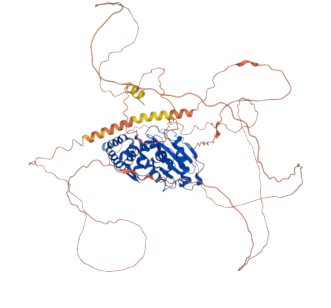New Framework Unveils Complex Dynamics of Black Hole Ringdown Signals

In a groundbreaking study published in the journal Physical Review Letters on June 25, 2025, a team of researchers revealed a new theoretical framework that elucidates the intricate behaviors of gravitational wave signals emitted during black hole mergers. This research indicates that the ringdown phase—characterized by the oscillations of the newly formed black hole—exhibits a complexity that challenges prior understandings of these cosmic events.
The study, led by Dr. Huan Yang, a physicist at Tsinghua University, identifies quadratic mode couplings as a significant factor in the gravitational waves produced when two black holes collide. During this phase, the newly merged black hole vibrates like a struck bell, generating waves that are not merely linear but instead exhibit a nonlinear interplay of primary oscillation modes. This phenomenon had been predicted by Einstein’s theory of general relativity but had not been fully characterized until now.
According to Dr. Yang, “Over the past few years, the theoretical tools for studying nonlinear perturbations of black holes have gradually become available, prompting us to explore the nonlinear ringing of black holes.” The research reconciles long-standing discrepancies between theoretical predictions and numerical simulations regarding black hole behaviors, marking a notable advancement in the field of gravitational wave astronomy.
### Context and Significance The discovery comes at a pivotal moment for gravitational wave research, as current detectors such as LIGO (Laser Interferometer Gravitational-Wave Observatory) and Virgo are nearing their detection limits for these subtle secondary signals. As Dr. Yang explained, “To pick up these nonlinear signals, we need devices that can accurately probe the binary black hole merger process, especially in the ringdown stage.” This new understanding could lead to enhanced observational capabilities and, potentially, new tests of general relativity in extreme gravitational environments.
### Methodology The research team employed two independent analytical methods to investigate these interactions: a complex contour technique and a novel hyperboloidal time-slicing approach. The latter method simplifies the mathematical treatment of the governing equations by utilizing specialized coordinate systems. This allowed the researchers to identify four distinct coupling channels through which primary oscillation modes create secondary signals, providing a comprehensive classification of these interactions.
Remarkably, one channel, characterized by negative contributions from both parent modes, was found to be nonexistent, a finding that reveals constraints on black hole behavior. As Dr. Yang noted, “The calculation is based on the theoretical framework called 'Black Hole Perturbation Theory,' which has been established for over fifty years.” This validation of their theoretical predictions against existing simulations underscores the robustness of their approach.
### Implications The implications of this research extend far beyond theoretical physics. Identifying and analyzing these nonlinear behaviors could lead to exceptional experimental verification of general relativity under extreme conditions. Furthermore, discrepancies between observed and predicted coupling strengths could hint at physical phenomena that challenge established theories.
Dr. Yang anticipates that future research will not only focus on quadratic effects but will also aim to provide a comprehensive description of all nonlinear behaviors in black hole ringdowns. “I believe once all these important nonlinear signals are understood, we can construct a 'complete' ringdown waveform that accurately describes the ringdown signal starting from the peak of the merger,” he stated.
### Future Prospects Looking ahead, the study provides a roadmap for future investigations into black hole physics. With next-generation detectors like Cosmic Explorer and the space-based LISA (Laser Interferometer Space Antenna) on the horizon, the capability to detect and analyze these intricate gravitational wave signals is within reach. The researchers project that moderate mass ratio binary systems with maximally spinning black holes will yield the strongest signals, offering promising avenues for further exploration in gravitational wave astronomy.
In conclusion, this innovative framework not only enhances our understanding of black hole mergers but also paves the way for deeper insights into the fundamental workings of the universe, reaffirming the significance of gravitational wave research in contemporary astrophysics.
For further reading, see the original study: Neev Khera et al, “Quadratic Mode Couplings in Rotating Black Holes and Their Detectability,” Physical Review Letters (2025). DOI: 10.1103/PhysRevLett.134.211404.
Advertisement
Tags
Advertisement





